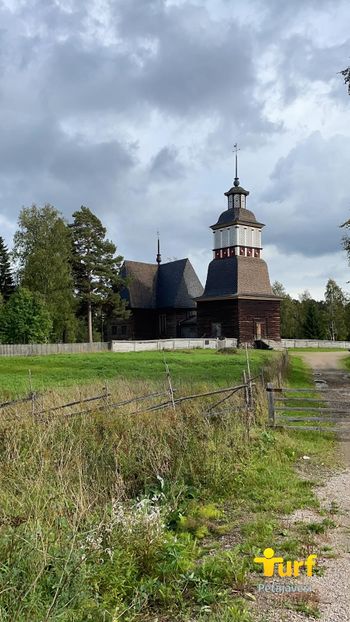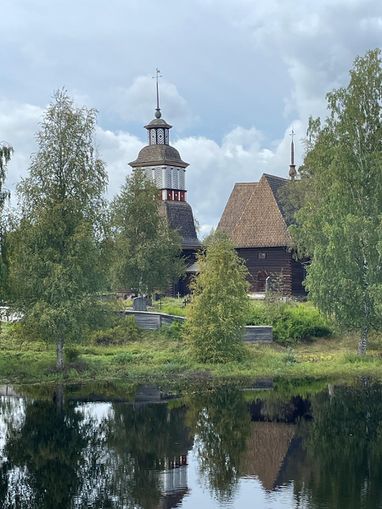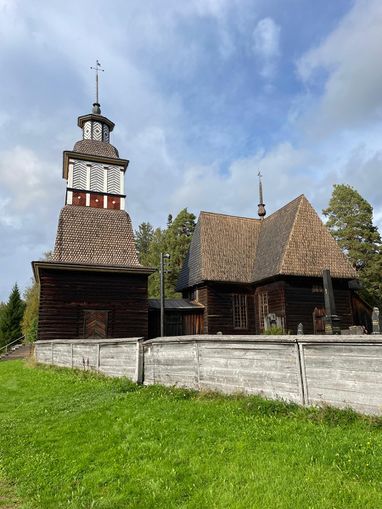Zone:Petäjävesi
| Petäjävesi | |
|---|---|
 Picture taken by FilleFilur | |
 | |
| Information | |
| Difficulty | |
| Location | Petäjävesi, Länsi- ja Sisä-Suomi, Finland |
| Surface | Gravel, wood |
| Created | 2015-02-28 21:28:00 |
| Trivia | #584 on UNESCO's World Heritage Site |
| Petäjävesi at Turfgame.com | |
Petäjävesi is a turfzone in the municipality of Petäjävesi in the region of Länsi- ja Sisä-Suomi (Western- and Inner Finland) in Finland. The zonen is located in the province of Keski-Suomi and it is counted as a world Heritage Site.
Contents
Placement[edit]
This zones is placed by the Petäjävesi Old Church, south of the Petäjävesi town center.
Petäjävesi Old Church[edit]
Petäjävesi Old Church, in central Finland, was built of logs between 1763 and 1765. This Lutheran country church is a typical example of an architectural tradition that is unique to eastern Scandinavia. It combines the Renaissance conception of a centrally planned church with older forms deriving from Gothic groin vaults.
Built for a small Lutheran parish in central Finland, Petäjävesi Old Church is located on a peninsula at Lake Solikkojärvi and is surrounded by an agricultural landscape with lakes and forests, typical of the region.
Construction of this wooden church was led by a local master builder, Jaakko Leppänen. The bell tower was added to the western part of the church in 1821 by the master’s grandson, Erkki Leppänen.
Petäjävesi Old Church is representative of the architectural tradition of wooden churches in northern Europe. The Old Church is a unique example of traditional log construction techniques applied by the local peasant population in northern coniferous forest areas. European architectural trends, which have influenced the external form and layout of the church, have been masterfully applied to traditional log construction.
The adaption of forms and techniques of varied provenance makes this church a multi-layered landmark and an outstanding example of Nordic church architecture. The church is built entirely of pine wood, worked in a constructive and economical manner.
The layout and interior of the church, with intricate perspectives, vaulting and a central cupola, combines the influences of Renaissance, Baroque and Gothic styles with the Finnish vernacular tradition of log construction. The steepness of the pitched roof recalls the Gothic tradition. The interior’s hand-carved log surfaces with their silky patina and the silvery sheen on the seasoned walls lend the hall its unique atmosphere, which is further enhanced by the slightly irregular placement of the floor beams and pews. The distinctive features of the interior are the elaborately carved pulpit, pews, chandeliers, and galleries with balustrades, which are entirely the work of local craftsmen and artists.
In 1879, a new church was built on the other side of the strait and the Old Church went out of use. Repairs, restoration and conservation works started in the 1920s when the historical and architectural value of the Old Church was recognized. Today, the churchyard is still in use, while the church is used only in the summer.
Gallery[edit]
Photo: FilleFilur
Photo: FilleFilur
Turf Issues[edit]
- 2022-09-10 Issue #15183 reported by Ojarnstr with the headline: The zone could be placed closer to actual heritage site
Nearby zones[edit]
There are currently no nearby zones.

